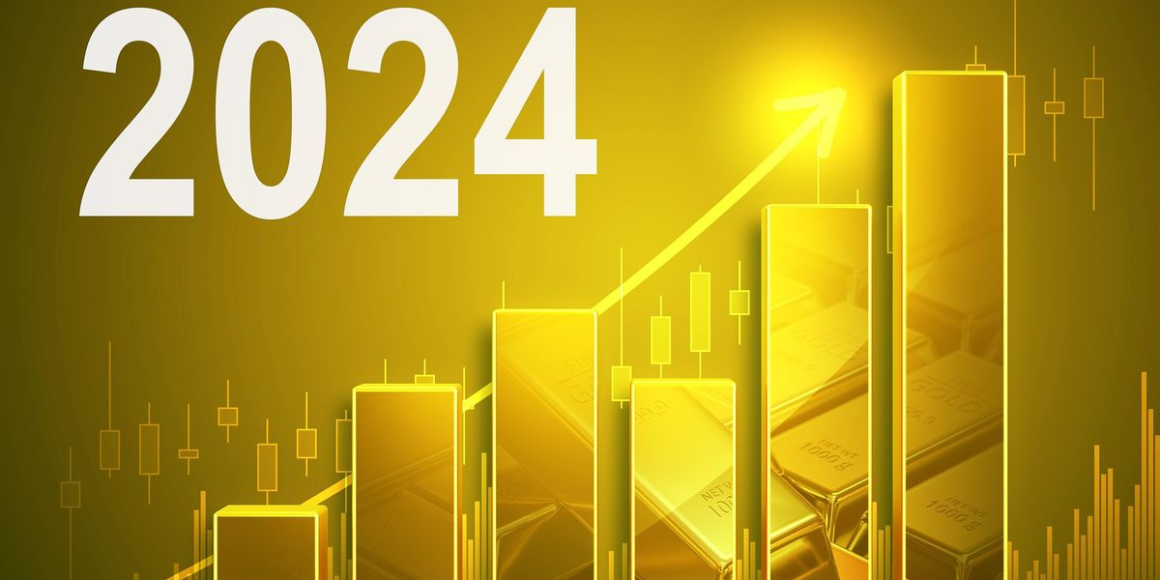At the beginning of April, gold was at US$2,250, finding support from investors betting on a June interest rate cut from the US Federal Reserve, as well as strong central bank buying. The precious metal found further support in May as geopolitical and sovereign debt concerns weighed on investors in China and the Middle East.
On May 20, gold hit US$2,450.05, its highest price ever. Read on for more on how it got there and what’s next.
The biggest story for gold in Q2 was its price activity. As mentioned, strong momentum carried over from March, allowing the yellow metal to break through US$2,400 in mid-April. Its price gains were influenced by various factors, including continued buying from central banks, strong demand from Chinese retail investors and better sentiment from western investors, which helped to stem flows out of gold exchange-traded funds (ETFs).
“All of a sudden, gold was off to the races. It jumped so high that all of a sudden you had some short covering that needed to happen then as well. So you had short covering, which means they’re buying. And then you had momentum chasers and traders jumping all in. That was a pretty good spike … I think’s what kind of started all of this,” Clark said.
This uncertainty has created resistance for gold, which finished Q2 at the US$2,325 level.
Gold ETFs continued to see outflows in the second quarter, albeit at a reduced pace. Outflows from western funds have declined, while funds elsewhere in the world have seen higher inflows.
On the flip side, the worst-performing ETFs for the quarter in terms of flows were primarily from Europe, with German and UK funds holding six of the slots, with two Swiss, one French and one American fund rounding out the bottom 10.
For the most part, gold stocks haven’t yet reacted to the elevated gold price.
“The central banks have been buyers of gold, but they aren’t buyers of gold shares. So it makes perfect sense that because the audience for gold, at least temporarily, has changed, that this dichotomy exists,” he said.
Clark also noted that the juniors that aren’t in the GDXJ have been underperforming, but given how well gold has performed it’s just a matter of time. “I think the fuse has been lit, because once gold starts to move the money will move down into the producers, then developers and then juniors,” he said.
“With the price of gold above US$2,000 an ounce, people are looking at junior explorers and saying, ‘What have they found and could that really grow?’ You’re watching the high-cost producers suddenly start performing because now they’re moving into the positive territory in their earnings, and there are some M&As still going around as people say it’s faster and possibly cheaper to buy the ounces than to drill and wait for the results,” he said.
With the price of gold changing so fast, Clark has had to make some adjustments to his forecast for the rest of the year. For him, the next level to watch is US$2,500, and he is confident it will get there this year.
“We had a 38 percent rise in the gold price, in this upcycle, but the average upcycle is much higher, and if this upcycle were to end today it would be the lowest in history,” Clark said.
Overall, experts believe a great deal of potential has yet to be unlocked in the gold price as well as gold companies. The current market may provide opportunities for investors who have been waiting on the sidelines to invest in producers or ETFs, and — depending on risk appetite — chances to get exposure to well-positioned juniors.
Securities Disclosure: I, Dean Belder, hold no direct investment interest in any company mentioned in this article.
Editorial Disclosure: The Investing News Network does not guarantee the accuracy or thoroughness of the information reported in the interviews it conducts. The opinions expressed in these interviews do not reflect the opinions of the Investing News Network and do not constitute investment advice. All readers are encouraged to perform their own due diligence.


Leave a Reply